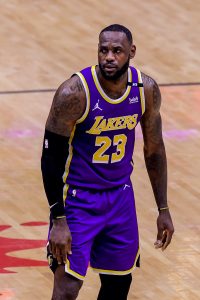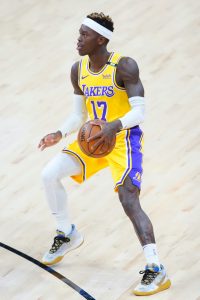The Clippers entered this season looking to get back on track after a brutal collapse in the 2020 playoffs that saw them build a 3-1 lead on the Nuggets, only to lose three straight games and be eliminated in the second round.
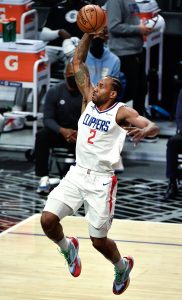 Over the offseason, Los Angeles rebuilt its roster to bolster its chances of becoming the championship team it sees itself as, adding veterans Nicolas Batum and Serge Ibaka in free agency, re-signing Reggie Jackson and Marcus Morris, and trading Landry Shamet in a deal for Luke Kennard. A midseason trade of Lou Williams brought Rajon Rondo back into the fold, and the team signed DeMarcus Cousins to a 10-day contract that was eventually parlayed into a deal for the rest of the season.
Over the offseason, Los Angeles rebuilt its roster to bolster its chances of becoming the championship team it sees itself as, adding veterans Nicolas Batum and Serge Ibaka in free agency, re-signing Reggie Jackson and Marcus Morris, and trading Landry Shamet in a deal for Luke Kennard. A midseason trade of Lou Williams brought Rajon Rondo back into the fold, and the team signed DeMarcus Cousins to a 10-day contract that was eventually parlayed into a deal for the rest of the season.
The team struggled with injuries throughout the year, as stars Paul George and Kawhi Leonard each missed 18-to-20 games and Ibaka and Patrick Beverley were limited to 41 and 37 games, respectively. 23-year-old center Ivica Zubac was the only player to suit up for all 72 regular season contests.
Even with the litany of injuries, the Clippers made it to the Western Conference Finals this year for the first time in franchise history. George described feeling “the monkey off the Clippers’ back in terms of getting past the second round,” but the elation was short-lived.
The Clippers lost Leonard to a partial ACL tear that caused him to miss the final eight games of the club’s playoff run. Despite an epic performance from George, who averaged 29.6 PPG, 11 RPG and 5.6 APG in the eight games without Leonard, L.A. ultimately fell to former Clipper Chris Paul and the Suns in six games in the Western Finals.
With Leonard facing a long recovery period – as well as a decision on his $36MM player option – the Clippers are in a tricky position as they move into next season in the hopes of once again upgrading their roster and finally reaching their goal of winning a championship with George and Leonard.
The Clippers’ Offseason Plan:
Everything revolves around Leonard’s player option this summer. While it’s considered unlikely he leaves a team built around him in his home of Los Angeles, Kawhi is a notoriously difficult player to get a read on, and teams will be lining up to sign him to a long-term deal — even if he’s set to miss all of next season.
Showing Leonard a redoubled effort to build a championship roster will be crucial for the Clippers. Should Leonard either pick up his option or re-sign, either to a long-term deal or to a one-and-one that would allow him to hit free agency again in a year, the team will need to win without him during his absence and be ready to compete at the highest level upon his return.
How they will manage that could be a little tricky.
Reggie Jackson, the team’s second-best player once Leonard went down, will be a free agent, and after playing this year on a $2.3MM contract, he could be looking for one final big payday. The team’s other veteran point guards, Rondo and Beverley, are both on expiring contracts worth a combined $21.8MM while Serge Ibaka has a $9.7MM player option that he’s likely to pick up, given his injury-plagued season. Between performance, age and injury, none of the three are likely to have much in the way of positive trade value.
Luke Kennard represents another roadblock. The team traded Shamet for the 25-year-old sharpshooter and then signed him to a four-year extension, despite injury concerns. Unfortunately, Kennard looked a far cry from the building block the Clippers hoped he’d become, averaging just 5.6 PPG in 14 minutes a night during the playoffs and only a slightly better 8.6 PPG in 19.6 MPG during the regular season. Given his age and the fact that he shot 44.6% on threes in 2019/20, it’s possible he retains some value, but due to both his contract and the lingering injury concerns, it’s unlikely he would command a large return.
One player who improved his value is 24-year-old guard/wing Terance Mann. Though Mann’s averages of 7.6 PPG and 2.7 RPG might not jump off the stat sheet, his energy, improved shooting stroke, and performance in important games has made him a genuine asset for the Clippers, either as a trade chip or in an increased role. He’s eligible for an extension this offseason.
If the team is desperate to make a big splash, some combination of Mann, Zubac, Marcus Morris, and the 25th overall pick (which could only be traded after the selection is made) could be its best bet. Morris is owed $49.1MM over the next three seasons, and has been productive on both ends during his time with the Clippers. Zubac is only 24 and is a strong defensive center, but because of his offensive limitations, has never averaged over 23 MPG in his career. With the depth of the 2021 draft class, the 25th pick could represent a chance to get real value, whether for the Clippers or for a team that trades for it.
The Clippers have eight players outside of Leonard under contract for next year, assuming Ibaka picks up his option. The question is how much confidence Kawhi has in those players to help get him his third championship. Since Los Angeles is an attractive destination for buyouts and ring-chasers, the Clips will likely have access to some options in free agency that other teams might not, but there are still big decisions on tap, even if Leonard agrees to re-up.
Salary Cap Situation
Note: Our salary cap projections are based on a presumed 3% increase, which would result in a $112.4MM cap for 2021/22.
Guaranteed Salary
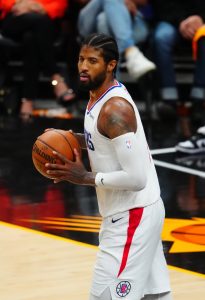 Paul George ($39,344,970) 1
Paul George ($39,344,970) 1- Marcus Morris ($15,627,907)
- Patrick Beverley ($14,320,987)
- Luke Kennard ($12,727,273)
- Rajon Rondo ($8,250,000)
- Ivica Zubac ($7,518,518)
- Daniel Oturu ($1,517,981)
- Jay Scrubb (two-way)
- Total: $99,307,566
Player Options
- Kawhi Leonard ($36,016,200): Early Bird rights
- Serge Ibaka ($9,720,900): Non-Bird rights
- Total: $45,737,100
Team Options
- None
Non-Guaranteed Salary
- Yogi Ferrell ($1,977,011)
- Terance Mann ($1,782,621) 2
- Total: $3,759,632
Restricted Free Agents
- None
Two-Way Free Agents
Draft Picks
- No. 22 overall pick ($2,168,760)
- Total: $2,168,760
Extension-Eligible Players
- Patrick Beverley (veteran)
- Kawhi Leonard (veteran) 4
- Terance Mann (veteran)
Unrestricted Free Agents / Other Cap Holds
- Patrick Patterson ($4,001,015): Early Bird rights
- Reggie Jackson ($1,669,178): Early Bird rights
- Nicolas Batum ($1,669,178): Non-Bird rights
- DeMarcus Cousins ($1,669,178): Non-Bird rights
- Total: $9,008,549
Offseason Cap Outlook
The Clippers only have about $99MM in guaranteed salaries for now, but will cross the tax line if Leonard opts in or re-signs. If Ibaka opts in, Mann and the first-round pick are retained, and Kawhi gets a new maximum-salary contract, team salary will balloon to $152MM+ for 12 players, putting L.A. far into tax territory.
Cap Exceptions Available
- Taxpayer mid-level exception: $5,890,000 5
- Trade exception: $2,075,880
- Trade exception: $1,995,120
- Trade exception: $980,533
Footnotes
- This is a projected value. George’s salary will be 35% of the 2021/22 salary cap.
- Mann’s salary becomes fully guaranteed after August 25.
- Because he has been on a two-way contract with the Clippers for two seasons, Coffey is eligible for a standard minimum-salary qualifying offer.
- Leonard would only be extension-eligible if he exercises his player option.
- This is a projected value. If the Clippers stay below the tax apron, they could have access to the full mid-level exception ($9.5MM) and the bi-annual exception ($3.7MM).
Salary and cap information from Basketball Insiders, RealGM, and ESPN was used in the creation of this post. Luke Adams contributed to this post.
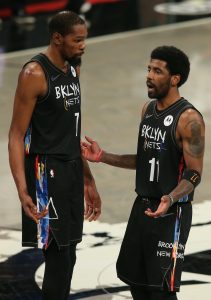 The wait was worth it. Durant and Irving looked like their old selves in 2020/21, and adding
The wait was worth it. Durant and Irving looked like their old selves in 2020/21, and adding 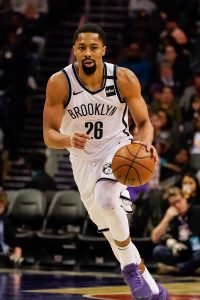
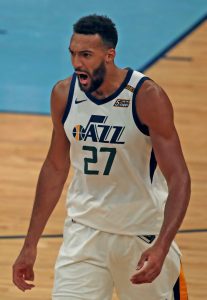 Always a strong defensive team since
Always a strong defensive team since 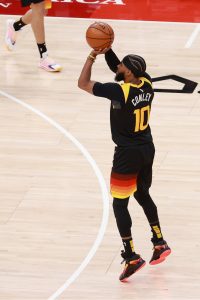
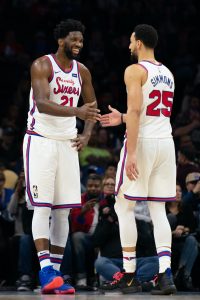
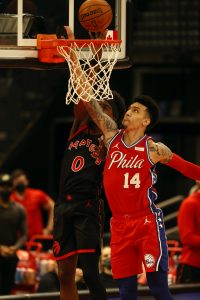
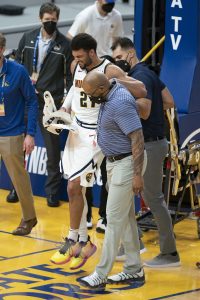 Those good vibes didn’t last long though. After the Nuggets won eight of their first nine games with Gordon in the lineup, disaster struck in the 10th game, as
Those good vibes didn’t last long though. After the Nuggets won eight of their first nine games with Gordon in the lineup, disaster struck in the 10th game, as 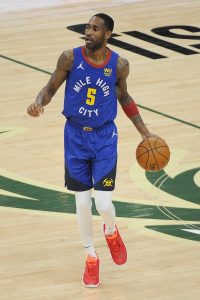
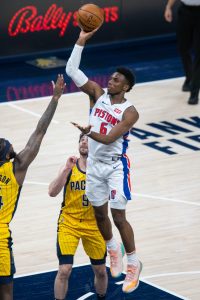 For instance, after earning $1,663,861 this season, Pistons guard
For instance, after earning $1,663,861 this season, Pistons guard 